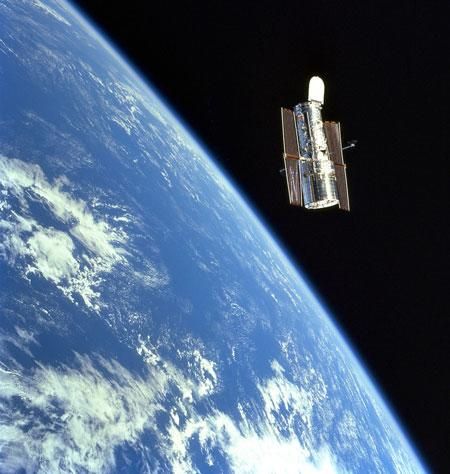(单词翻译:单击)
For the first time, scientists see that each pillar is dotted with small clumps of gas.
有史来第一次,科学家们知道了这些巨柱每一个都是由许多小气团拼凑而成。
Could such clumps be a missing link in the birth of stars?
这些气团会是我们寻找的恒星诞生的缺失环节吗?
Hester calls the clumps, Evaporating Gaseous Globules.
海斯特将这些气团称作蒸发性气体团状物,
EGGs, for short.
简称EGGs。
The image reveals that forming inside some of the EGGs are embryonic stars.
图象显示一些EGGs的内部形成的是胚胎阶段的恒星。
What we are looking at is a snapshot of a very dynamic process.
我们看到的是天体正在形成阶段的图片,
A snapshot of something that's changing.
是正在经历变化的天体的图片。

As part of that change, you know, a next generation of stars is emerging.
做为变化的一部分,就是下一代的恒星正在形成。
This one for example, you can see the little red dot in there which actually is the star.
举个例子,你看到的那个小红点实际上是个恒星。
And that one is an especially nice one, where the star at the tip of the EGG is actually pronounced.
那是非常美的一颗恒星,处于EGGs的顶端已经说明了它的来历。
In the photograph, the EGGs appear small.
在图片里,EGGs都显的很小。
But our entire solar system could fit comfortably inside each one.
其实在任何一个EGGs里,把我们的太阳系放进去都绰绰有余。
These hot clumps of gas are the first stage of the formation of a star.
这些炙热的气团是恒星形成的初始阶段。
And the towers where they hang are rightfully called, "The Pillars of Creation".
气团所处的巨柱应该称做——“创始之柱”。
Hubble's image of the Eagle Nebula shows us an early stage in the creation of stars.
哈勃拍的老鹰星云图片向我们展示了恒星产生的初始阶段。
What it doesn't show is the next stage.
但是没有展示出初始阶段的下一阶段
How stars hatch from EGGs.
恒星是如何从EGGs演化出来的。
That answer came from images Hubble captured in 1994.
答案来自于哈勃1994年捕捉到的图片。
Some 1,500 light-years away from Earth lies the Orion Nebula.
来自于离地球1500光年的猎户座星云。
Like the Eagle Nebula, Orion is a birthplace of stars.
象老鹰星云一样,猎户座星云也是恒星的产生地。
When scientists closely examined this image, they discover tiny dark spots.
当科学家们仔细的察看了这些图片后,他们发现了一些小黑点,
Flattened discs of gas and dust spots created by recently hatched EGGs.
那是由EGGs刚刚演化出来的扁平的碟状气体、尘埃点。
The spots are called proto-planetary discs.
这些点被称做“原生行星碟状物”,
Proplyds, for short.
简称“原星碟”。
The warm, orange clump in the center pulls in loose material from the surrounding disc.
炙热、桔黄色的气团在“原星碟”的中央,将周边松散的物质拉进来。
This squeezes the matter in the center of the clump.
并向气团中央挤压物质。
The pressure grows. The clump heats up.
压力越来越大。气团的温度也越来越高。


